Associação Comunitária Monte Azul
by
Robert Gorter, et. al.
Robert Gorter, MD, PhD, is emeritus professor of the University of California San Francisco Medical School (UCSF), etc.
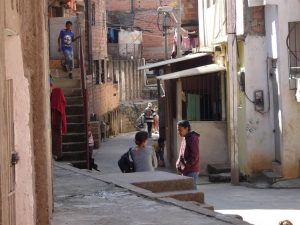 Monte Azul
Monte Azul
Dr. Robert Gorter was often in Brazil as a visiting Professor of UCSF where he lectured mainly at the universities of Rio de Janeiro and of San Paolo. As a Northern European Calvinist, it was interesting for Dr. Gorter to witness all these free days at the universities and public services as another saint’s birthday or religious event was celebrated.
Forgiving house-intern seminars for the associated medical doctors and therapists, Dr. Gorter visited the Clinica Tobias and was the personal guest of Dr. Burkard and her husband on all occasions.
The Associação Comunitária Monte Azul (ACOMA) is a Brazilian NGO that adopted and actively participate through sponsoring and practical assistance in three Favelas in the southern part of São Paulo, M’Boi Mirim / Campo Limpo. The organization was founded in 1979 by the German Waldorf teacher Ute Craemer together with the residents of the Favela Monte Azul. In the early 1980s, the work spread to the Favela Peinha nearby and Horizonte Azul on the southern edge of the city. The project is a successful example of sustainable Development cooperation between equal partners.
The organization’s main areas of work are slum renovation, education of the general public on hygiene, building and maintaining infrastructures, etc., and further education for children and young people, culture, health care, and environmental conservation. The Associação Comunitária Monte Azul today has more than 260 employees and receives around 70 overseas volunteers per year, 20 of these from other countries, in particular, Germany and Holland.
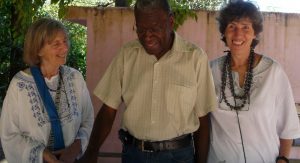
Ute Craemer, Paulo Ignacio and Renate Keller-Ignacio, the initiators of the Associação Comunitária Monte Azul in São Paulo, Brazil
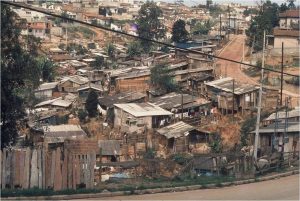
Favela Monte Azul in 1981
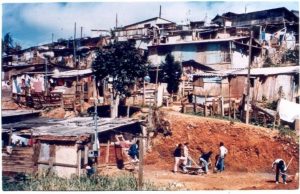
Renovation through community work by the residents and sponsored by private sponsors from Germany and The Netherlands
The Favela Monte Azul, which had originally around 18.000 residents, was established in the 1970s during the period of rapid urbanization due to the rural depopulation from North-eastern Brazil and the provinces Minas Gerais and Paraná. Through the project, through which Ute Craemer wished to awaken some social awareness amongst her students at the Waldorf School, she came into contact with the children of the Favela. It began with afternoon care in Ms. Craemer’s own home. Out of this impulse to build a bridge between the different classes of society, a project began that is still growing and continually incorporates new aspects. At present, an estimated 42.000 people are benefitting from the work of Monte Azul.
Monte Azul has become an example for Development Aid and a model for many similar social projects that have come about in Brazil, such as the street theatre group Paidéia, the cultural and social center Aramitán in São Paulo oder die NGO Associação Comunitária de Barra de Lama (br.) Northern Brazil.
Education
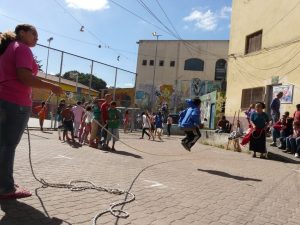
One of the nursery schools houses ten Waldorf Kindergarten groups and an organic kitchen.
The organization aims to foster children, no matter what situation they come from. This includes the fine motor control of Kindern in Favelas
There are some 1350 children and young people between the ages of four months and 21 years being cared for by the créches, nursery schools, training workshops and a local Waldorf school, the work being based on the principles of Waldorf education and Anthroposophy. A further 80 people with Special Needs are cared for in another training workshop. One of the principles of the Associação Comunitária Monte Azul is to not just communicate knowledge but rather to facilitate a comprehensive education for their children and young people that enable them to take their lives into their own hands, encouraging them to change the harsh realities that surround them.

Circus and Games are educational tools in Monte Azul
Culture
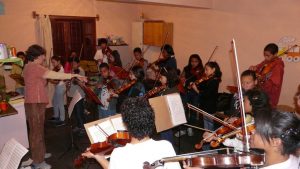
An orchestra with children and youths of the Favela. The Weidler string instruments originate mainly from German and Dutch donors
Through re-enlivening and cultivating local cultural traditions, the feeling of self-worth and confidence of the people is strengthened. Through meeting with foreign cultures their horizon is broadened, their consciousness stimulated and they nurture a culture based on peace. In all of its three centers, Monte Azul has a theatre and conference rooms as well as libraries to give people access to cultural content. A variety of courses, further education, theatrical and musical events take place there, with around 600 people a month participating.
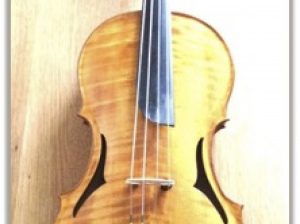
An Ahorn violin built by Artur Bay. Wood from the Ahorn is the wood per excellence to build the First Violin; Cherry wood is for the Second Violin; wood from the Birch tree for the Viola.
The favela’s orchestra has string instruments built according to the indications of Rudolf Steiner who improved the sound and quality of string instruments and which were then developed by Professor Weidler in Prague during the 1920s and these instruments are –for the main part- donated by a few German and Dutch medical doctors: like Dr. Robert Gorter in Amsterdam and later in San Francisco California who plays on Weidler string instruments himself. Dr. Gorter donated a few violins and violas to the Favela’s orchestra. In Germany and for this purpose, Dr. Gorter had purchased several string instruments from Artur Bay who lived close to Hamburg at that time. Arthur Bay had just started his workshop to build Weidler instruments and in this way, Dr. Gorter could kill two birds with one stone: on one hand support a very young violin builder to jumpstart in Germany and on the other hand, donate the instruments to the foundation and the music school in Brazil.
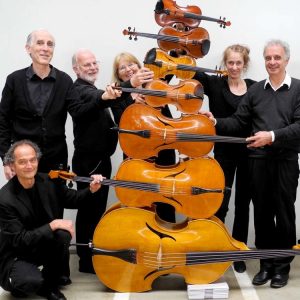
With a universal understanding: a septet consisting of 7 instruments all built according to the indications by Rudolf Steiner and put into practice by Prof. Weidler and others. A Septet is composed out of seven-string instruments dedicated to one of the seven planets and their corresponding trees.
The foundation also runs a music school where children and young people from the Favela can learn playing string instruments, to play in an orchestra and to sing in the choir.
Teacher enrichment
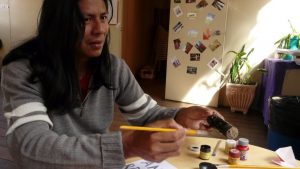
Art education, including traditional indigenous artwork, is an integral part of the organization
From the start, it was essential to further educate and train the co-workers, for they had grown up in the Favela. In this way, a culture of study and further education developed that has become a hallmark of Monte Azul.
There is a three-year in-service training program in Waldorf education that they call by the Indian name for the hummingbird: “Mainumby”. In this way, the co-workers of public organizations can train as Waldorf teachers for the accreditation of which they are currently in negotiation with the Brazilian government. In this way, the Associação Comunitaria Monte Azul has become a gathering point for socially engaged people and educators. Basic training, internships, research, and publication of didactic material and books, counseling in organizational, financial and professional issues for social workers, mentoring of university these and other areas are increasingly a part of their professional involvement. A project in environmental education was implemented in collaboration with UNESCO as well as a pilot project in establishing women’s co-operatives. Besides this, each co-worker, also those with a university degree, does an apprenticeship in social work with the principle of lifelong learning in mind.
Health
In Monte Azul’s Ambulatório or clinic, the residents of the Favela, as well as those of the neighboring communities, receive treatment free of charge. General practitioners, pediatricians, orthopedic surgeons, dentists, psychologists, and psychiatrists are available for consultation. The treatment takes place on a holistic basis extended through anthroposophic medicine.
In the Casa Angela, a maternity home and center for mother-and-child health care, women and their families receive medical care and guidance through pregnancy, birth and pre and ante-natal issues throughout the first year of the child. The Casa Angela is the first officially licensed birthing center in Brazil. It aims to improve the poor level of obstetrics care for low-income families and resist the extremely high rate of caesareans in Brazil.
Casa da Trilha treats people with addiction and psychiatric problems. Besides this, Monte Azul is a partner of the city of São Paulo in the program Estratégia Saúde da Família, being responsible for the municipality of São Luís in which live some 320,000 people. The program aims to try to improve the general medical care of the population.
Environmental education
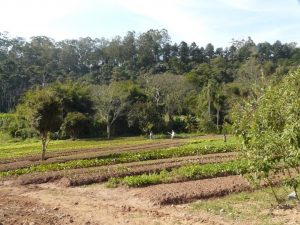
Bio-dynamic garden in Horizonte Azul that provides the Associação Comunitária Monte Azul with its fruit and vegetables.
From the beginning, environmental awareness played a central role. Fruit and vegetables are grown in Horizonte Azul without the use of pesticides and are delivered to the kitchens at Monte Azul, ensuring a balanced and healthy diet for the children.
By organizing community projects the residents of Monte Azul cleared the area of garbage, introduced re-cycling and built a sewerage system. Despite there being no municipal re-cycling the Favela independently runs a center where garbage collectors (Catadores) can deliver their waste. They have entered into collaboration on waste research with the Technical University of Berlin.
Cultural center
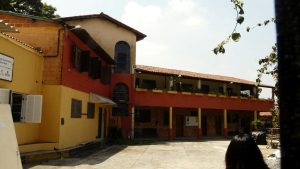
The cultural center of the community organization Monte Azul in São Paulo. The theatre in the Favela Peinha near Monte Azul.
In all three areas of activity of the ACOMA, there are stage and dance performances, musical and other artistic presentations. In the Centro Cultural Monte Azul, the residents of the Favela and neighboring suburbs direct their productions. They can attend concerts, plays and shows of well-known Brazilian and international artists, usually about eight to ten per month.
Besides the productions, courses in dance and sport are offered. ACOMA hires drama teachers and actors who stage professional productions in theatre workshops with the Favela residents that they normally perform twice a year.
Concept and co-worker guidance
Once a month all 280+ co-workers meet (without the co-workers of the primary health care centers) in one of the three Favelas, mostly in the Cultural Centre of Monte Azul for enrichment and art courses and cultural exchange. Mostly something from the work of Waldorf education is presented and performed. New co-workers and new international volunteers are welcomed or wished goodbye if their period of service has come to an end.
Through these regular meetings, a feeling of community and the vision of its activities is cultivated and through creative activities, new solutions are found for existing problems. Every second week the co-workers of each Favela meet internally for an afternoon of similar activities.
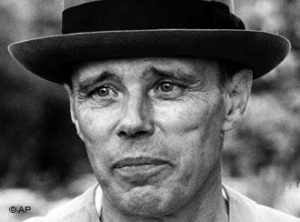
Joseph Beuys (1921-1986) was a German Fluxus, happening, and performance artist as well as a sculptor, installation artist, graphic artist, art theorist, and pedagogue. His extensive work is grounded in concepts of humanism, social philosophy, and Anthroposophy; it culminates in his “extended definition of art” and the idea of social sculpture as a “Gesamtkunstwerk,” for which he claimed a creative, participatory role in shaping society and politics. His career was characterized by passionate, even acrimonious public debate. He is now regarded as one of the most influential artists of the second half of the 20th century.
To a large extent, the organization has been structured without a hierarchy and is led by a process of consensus. This means that all co-workers can be a party to decisions and take responsibility for the whole. Within this structure aspect of Joseph Beuys’ “Social Sculpture” and the ideas on Social three-folding of Rudolf Steiner are realized. In this sense each co-worker is free within his or her sphere of work and can shape it in the manner he or she feels comfortable with. Besides, further studies are conducted on Waldorf education.
Gudrun Burkhard
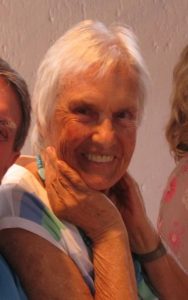
Gudrun Burkhard was born in São Paulo in 1929. At the age of 17, she started her medical course at USP. At the age of 21, she finds a book on crystallization with copper, an anthroposophical method of qualitative analysis. One day, she managed to do the crystallization experiments with blood herself and has had the strong experience that the spirit orders the matter. At the age of 27, she became a school doctor at Escola Higienópolis (currently Escola Waldorf Rudolf Steiner), the first Waldorf school in Brazil. After an invitation from Weleda in Arlesheim, Switzerland, for the first internship at Clinica Ita Wegman, she decided to study Anthroposophical Medicine in Switzerland.
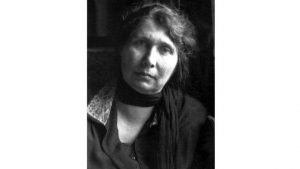
Ita Wegman, MD. (1876-1943)
Back in Brazil, quite enthusiastic about the new path she found, she set up a large deposit of Weleda medicines in her bathroom. Thus; the impulse to create Weleda do Brasil was born.
As of 1964, Gudrun’s office, in her own house, had a much-increased movement due to rhythmic massage and eurythmy. At 37 years, (at her 2nd lunar node), with her husband Pedro Schmidt, he laid the foundation stone of Clinica Tobias. On May 31, 1969, the legal foundation of Associação Beneficente Clínica Tobias (now Associação Beneficente Tobias – ABT) and on July 1, 1969, the Clínica Tobias opened. The newly founded association received the clinic and its facilities as a donation. The Tobias Clinic was the very first anthroposophical clinic outside the European continent. The movement of the clinic increased in the following years and it was soon necessary to buy a neighboring house, which was renamed Vivenda Tobias (the house is now transformed into the Otto Wolff Room, used mainly for courses for doctors and therapists by ABMA). In 1975, courses in Anthroposophical Medicine started at the Clinic. With the regular visits of Dr. Otto Wolff, seminars for medical students began. These seminars provided the diffusion and expansion of the Brazilian anthroposophical medical movement. Many doctors who are still active complemented their training through internships at Clinica Tobias.
At the age of 48, Gudrun decided to become part of Rafael’s Circle (Rafael Kreis), which is held annually in Arlesheim, at Ita Wegman Klinik, on the occasion of Easter. When she joined this Circle, she took the urge to decisively support the task of Rudolf Steiner and Ita Wegman for a spiritualization of medicine and all therapeutic impulses.
Due to the growing demand for medical courses and the need to create an adequate space for them, at the age of 51, the Paulus Center opens, an Anthroposophical Training center, which for a period hosted courses in Anthroposophical Medicine, and where the modules still take place today. of this same course.
As a consequence of the growth of the medical movement and its necessary organization, at the age of 52, the Brazilian Association of Anthroposophical Medicine was founded, of which he was president for 7 years.
At the age of 53, she founded Artemísia, the Human Development Center, mainly focused on biographical work and revitalization and detoxification programs. At the age of 54, she left Clinica Tobias, dedicating herself more intensively to biographical work.
Between 1984 and 1985 her 4 volumes on food were published by Editora Antroposófica (Novos Caminhos de Comida – reissued in 2009).
From the age of 59 on, she taught biographical counseling in Europe, twice a year. Several times Dr. Robert Gorter joined her in giving weekend seminars on Biography for HIV/AIDS patients and cancer patients. These Seminars were held in Berlin (Germany) and (sometimes in his own house) in San Francisco (California). As Dr. Gorter does, Gudrun Burkhard spoke several languages and offering a seminar in German or English was no obstacle at all.
As an internationally recognized HIV/AIDS expert, Dr. Robert Gorter could teach and update Dr. Gudrun Burkhard on the latest discoveries in the field of clinical research and epidemiology. They both spent long evenings together discussing HIV and AIDS from an anthroposophic point of view. It was also very helpful for Gudrun as she had lost a very dear and close person to AIDS in Brazil.
In 1993, she helped to found the International Association for Biographical Work, and in that same year, she started training in biographical counseling in Brazil.
Since 1997, she lived in Florianópolis, where she participated in the creation of Clínica Viális, of the Sagres Association. In this, she promoted the Artistic Therapy and Biography course, besides dedicating herself to writing books on human biography.
Her biography is closely linked to therapeutic processes, having inspired many young doctors and medical students to follow the same path. Certainly, the strength of her work in the world comes from her seriousness in following a deep inner path (Anthroposophy).
https://en.wikipedia.org/wiki/Associação_Comunitária_Monte_Azul
volunteers.uwcrcn.no/monte–azul-international-sao-paolo-brazil/